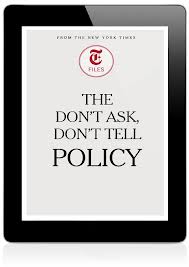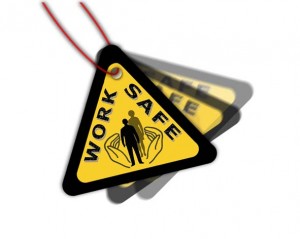Employment Issues
Health & Safety
As an employee it important to be aware of your rights and responsabilites with regards to health and safety in the workplace.
Your rights
- as far as possible, to have any risks to your health and safety properly controlled
- to be provided, free of charge, with any personal protective and safety equipment
- if you have reasonable concerns about your safety, to stop work and leave your work area, without being disciplined
- to tell your employer about any health and safety concerns you have
- to get in touch with the Health and Safety Executive (HSE) or your local authority if your employer won't listen to your concerns, without being disciplined
- to have rest breaks during the working day, to have time off from work during the working week, and to have annual paid holiday
Your responsabilities
- to take reasonable care of your own health and safety
- if possible avoid wearing jewellery or loose clothing if operating machinery
- if you have long hair or wear a headscarf, make sure it's tucked out of the way (it could get caught in machinery)
- to take reasonable care not to put other people - fellow employees and members of the public - at risk by what you do or don't do in the course of your work
- to co-operate with your employer, making sure you get proper training and you understand and follow the company's health and safety policies
- not to interfere with or misuse anything that's been provided for your health, safety or welfare
- to report any injuries, strains or illnesses you suffer as a result of doing your job (your employer may need to change the way you work)
- to tell your employer if something happens that might affect your ability to work (eg becoming pregnant or suffering an injury) - your employer has a legal responsibility for your health and safety, they may need to suspend you while they find a solution to the problem, but you will normally be paid if this happens
- if you drive or operate machinery, to tell your employer if you take medication that makes you drowsy - they should temporarily move you to another job if they have one for you to do
- Your employer must provide personal protective equipment (PPE) to you free of charge. You must use this correctly, and follow the training and instruction you have been given.
- In some jobs, failure to use PPE properly can be grounds for disciplinary action or even dismissal. However, you can refuse to wear PPE if it puts your safety at risk (eg PPE of the wrong size could put you at risk because of its poor fit). Ask your employer or the firm's safety representative for the right size (which must be provided free of charge).
- If you are a Sikh who works on construction sites and wear a turban you can legally refuse to wear head protection on religious grounds. This does not apply if you work at sites other than construction sites where, for example the use of safety helmets would still be required.
- If you are a Sikh who does not wear a turban you must wear the appropriate head protection.
If you have concerns about health and safety at work
- You should first of all discuss your concerns with your employer or immediate boss. Your company may have a safety representative, who might be your first point of contact. If you have an employee representative, such as a trade union official, they may be able to help you.
- As a last resort, you can get in touch with the authority responsible for enforcing health and safety in your workplace (either the HSE or your local authority).
- Health and safety inspectors have powers to enforce the law. If you take this course of action, your employer must not discipline you or put you at a disadvantage in your job - for example, not paying you for the time you refused to work because of unsafe conditions, passing you over for promotion, etc.
Other concerns:
Blog
Top eBooks Under $5 on Discrimination in the Workplace
Kindles, iPads and other electronic reading devices have made it more convenient for you to access materials, both for leisurely purposes and for informational purposes. With eBooks, you can obtain information to not only help you succeed, but to also help with possible problems that may occur in the workplace. This list is composed of eBooks from Amazon.com to help you learn how to handle discrimination of any kind in the workplace. What is even better, is that these eBooks are all under five dollars, yet provide detailed information that is easy to follow.
*Note: Ratings are all out of five stars.
by Cathy Harris
Price: $3.58
Rating: N/A
by Cathy Harris
Price: $3.58
Rating: N/A
The Don't Ask, Don't Tell Policy
by The New York Times
Price: $2.05
Rating: N/A
Workplace Diversity: Does Not Mean Equal Opportunity, Equal Growth, and Equal Advancement
by Richard Brown
Price: $3.59
Rating: N/A
by Cathy Harris
Price: $3.50
Rating: 1
by Bikash Kalita
Price: $3.58
Rating: N/A
by Richard Campbell
Price: $3.57
Rating: 5
Baby Boomers Facing The World Age- Discrimination- Employment
by James Williams
Price: $4.11
Rating: N/A
Related Articles:
- What are eBooks?
- Top eBooks Under $5 on Resumes
- Top eBooks Under $5 on How to Find a Job
- Top eBooks Under $5 on Interviews
- Top eBooks Under $5 on Cover Letters
- Top eBooks Under $5 on Working Abroad
- Top eBooks Under $5 on Communication
- Top eBooks Under $5 on College Preparation
- Top eBooks Under $5 on Networking
- Top eBooks Under $5 on Reference Letters
- Top eBooks Under $5 on How to get a Promotion
- Top eBooks Under $5 on Volunteering
- Discrimination
- Gender Discrimination
- Age Discrimination
- Racial Discrimination
- Disability Discrimination
Employment Issues
Employment Security Commission
What is Employment Security Commission?
It is a federal and state program for the unemployed to still receive money while they are out of work and searching for more employment. It is designed to help support families and households while the unemployed candidate is searching for another job. This program does have its limits and is not meant to pay the candidate the same amount that he or she made previously, or to enable the same standard of living before the candidate lost his or her job.
What does it offer?
The basic function of the program is that it pays the unemployed while they are searching for other employment options. However it also offers other services and benefits to help enhance the knowledge of the candidates. The program wants to help and encourage employment, not support the unemployed. Other benefits include: career information, resume help, training programs and job fairs.
How does it work?
The government began collecting a payroll tax on employers under the 1935 act. States were then also encouraged to set up programs following similar and broad guidelines. Currently, all states have some form of this program. Although each state has its own form of the program, they still follow the federal rules and guidelines. Most are standard with little differences such as the name of the program may vary from state to state as well as the specific benefits that are offered.
Who can apply to recieve the benefits?
Generally, anyone who lost their job can apply. However there are conditions that must be met before the unemployed candidate receives the insurance. The candidate must be out of work for reasons other than their own. For example, he or she must have been fired or if he or she quit, the reasoning must prove that there was legitimate cause such as safety issues. Also, in order to file for unemployment, the candidate needed to have worked for his or her previous employer long enough to prove that the employer paid a sufficient amount of money for the candidate into the system. The standard time period that the a state looks into the work history is about 15 months.
How long can you use it?
The general amount of time to receive unemployment benefits is about 26 weeks. However, there is the ability to apply for an extension that goes up to about 99 weeks. The amount of time depends on the qualification of the candidate.
For more information:
or
- Visit the program that your own state offers.
Oregon
Rhode Island
South Dakota
Employment Issues
Disability discrimination
Disability discrimination is when an employer that is covered by the Americans with Disabilities Act or Rehabilitation Act treats a qualified candidate who has a disability differently or unfavorably due to that disability. The disability could be current or the candidate may have a history of a disability such as cancer or another disease that prohibited working in the past, but the candidate is now in remission or able to continue working. Disability discrimination also applies to those who have mental impairments as well as physical.
The law covers disability discrimination in the workplace, harassment because of disabilities and reasonable accommodation for disabilities.
The United States Employment Opportunity Commission provides detailed information about each of those categories as well as links to further information about disability discrimination. Other sources include include information on your rights as a person with disabilities, where to go if you are being discriminated against as well as other accommodations and employment options.
-
Blog12 years ago
Sorority Recruitment
-
Resume and CV13 years ago
Letters of recommendation / references
-
Resume and CV13 years ago
Resume or Curriculum Vitae (CV) ?
-

 Resume and CV13 years ago
Resume and CV13 years agoWhich Resume Format Should I Choose?
-
Resume and CV13 years ago
Basic rules for writing your resume
-

 Cover Letter13 years ago
Cover Letter13 years agoThe cover / motivation letter
-
Cover Letter13 years ago
Europass CV
-
Sample Resumes, Examples and Templates13 years ago
Reference Example




